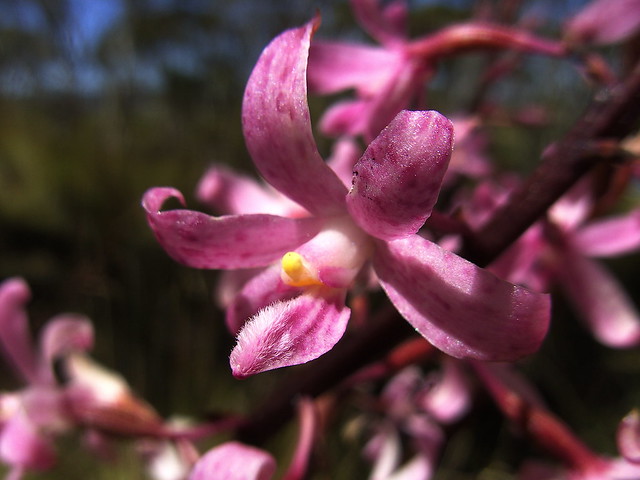 |
| Dipodium roseum, a parasitic Australian relative. Photo by Ian Sutton. |
This, of course, is interesting on its own, but what caught my attention today was the description of a new species in 2006 by Peter O'Byrne and Jaap Vermeulen. They found Dipodium fragrans growing in eastern Johor state of Peninsular Malaysia, inhabiting the lowland swamp-forests common to the area. Dipodium fragrans, as you can deduce from the species epithet, is heavily perfumed, so much so that it led to this humorous description, hidden away among the often stuffy and sometimes inaccessible language of academic botany:
D. fragrans is noteworthy in two other respects: the inflorescence is often branched, and the flowers are strongly fragrant, hence the specific name. Vermeulen describes the scent as "being like Chanel No 5", while O'Byrne (a poor schoolteacher) is ignorant about luxury fragrances and likens the scent to frangipani's.Science, including the scientific descriptions of new species, could learn a lesson from O'Byrne and Vermeulen. A little humor, properly placed, makes for a more engaging read. It certainly stuck with me more than if that comment had been omitted!
Reference:
O'Byrne, Peter, and Jaap Vermeulen (2006). Two Cheirostylis species and a new Dipodium. Malayan Orchid Review, 40, 91-94
